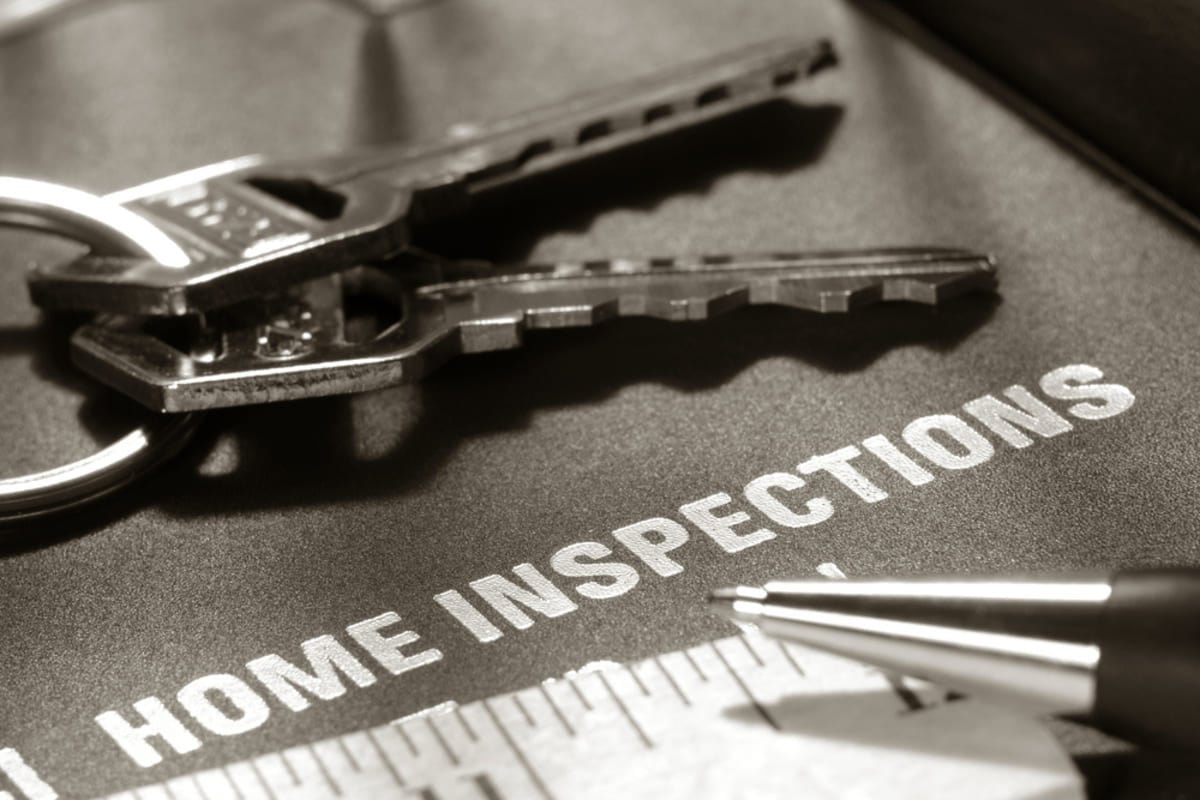As a landlord, you have a clear agreement with your tenants about who resides in the property you're renting out. But what happens when you discover more occupants than your lease allows? This situation can bring many problems with Charleston property management, from potential damage to your property to liability issues.
Our experts will guide you through the steps to take if you find yourself with unauthorized tenants, helping you navigate this tricky terrain while protecting your interests.
Protecting Your Investment Property: Ensuring Every Occupant is on the Lease
As a property owner, it is essential to maintain lease compliance by ensuring that every person residing in your investment property is listed on the lease agreement. This practice protects you and your tenants and helps maintain a harmonious landlord-tenant relationship. By understanding the importance of lease compliance and the consequences of unapproved occupants, you can safeguard your investment property effectively.
Understanding the Importance of Lease Compliance
Lease compliance is crucial for several reasons. First, it helps maintain your rental property's legal and financial integrity. Having all occupants listed on the lease establishes a clear contractual relationship with each individual, outlining their rights and responsibilities. This protects your property and ensures that everyone is accountable for adhering to the terms and conditions of the lease agreement.
Second, lease compliance helps you manage occupancy and security effectively. By knowing exactly who resides on your property, you can maintain control over the number of occupants, prevent overcrowding, and ensure that the property is occupied by individuals who have passed your tenant screening process.
Consequences of Unauthorized Tenants
Allowing unapproved occupants to reside in your rental property can lead to various complications and risks. Some of the potential consequences include:
- Violation of lease terms: Allowing unauthorized tenants to reside in the property goes against the terms of your lease agreement. This breach can have legal implications and may provide grounds for eviction if not addressed promptly, you can learn more by reading into the landlord-tenant laws.
- Increased wear and tear: Additional occupants in the property can lead to increased wear and tear, potentially affecting the condition of your investment. This can result in higher maintenance and repair costs.
- Safety and security concerns: Unapproved occupants may have undergone a different tenant screening process than your approved tenants. This can pose safety and security risks to the property and other tenants.
- Insurance and liability issues: If an unapproved occupant is involved in an accident or damages the property, it may impact insurance coverage and lead to liabilities for the property owner.
To mitigate these risks and protect your investment property, it is essential to take proactive measures to ensure every occupant is on the lease. Doing so lets you establish clear expectations, maintain control over occupancy, and promptly address any lease violations.
Assessing the Situation
When you discover that more tenants are occupying your rental property than are listed on the lease, it is essential to assess the situation promptly, as this is a lease violation. You can address the issue effectively and ensure lease compliance by taking proactive steps. Two key aspects of assessing the situation are identifying unapproved occupants and gathering documentation and evidence.
1. Identifying Unapproved Occupants
The first step in assessing the situation is identifying unauthorized tenants living on your property. This can be done by conducting regular inspections or through reports from neighbors or other tenants. It is crucial to verify the number of individuals residing in the property and compare it to the lease agreement.
It is crucial to recognize that long-term guests can also be classified as unauthorized occupants if their stay exceeds the period stipulated in your lease agreement. In your lease, clarify the duration a guest can stay before they are considered an unauthorized tenant. For instance, a guest staying more than two weeks without landlord approval may fall into this category.
By identifying unapproved occupants, you can determine the extent of the lease violation and take appropriate action.
2. Gathering Documentation and Evidence
Gather documentation and evidence to address the lease violation and enforce lease compliance. This documentation proves that there are more occupants than stated on the lease. Some key pieces of documentation and evidence to collect include:
- Lease Agreement: Review the lease agreement to understand the specific terms regarding the number of allowed occupants. This document will serve as the foundation for resolving the violation.
- Tenant Communications: Gather any written or electronic communications regarding the lease agreement and occupancy between you and the tenants. These communications can provide valuable insights and support your case.
- Inspection Reports: If you have conducted regular inspections of the property, gather any inspection reports indicating additional occupants. These reports can serve as evidence of the violation.
- Witness Statements: If neighbors or other tenants have reported the presence of unapproved occupants, collect their statements as evidence. Witness statements can strengthen your case and provide additional support.
Document everything thoroughly and maintain a record of the gathered evidence. This documentation will be crucial when addressing the lease violations and communicating with the tenants.
You can establish a strong foundation for addressing lease violations by assessing the situation, identifying unapproved occupants, and gathering documentation and evidence. The next step is to review the lease terms and penalties and effectively communicate with the tenants, which we will cover in the following sections.
Addressing Lease Violations
When you discover that more tenants reside in your rental property than are listed on the lease, it's essential to address this lease violation promptly. Addressing lease violations involves reviewing lease terms and penalties and communicating with tenants to ensure compliance.
Reviewing Lease Terms and Penalties
Begin by thoroughly reviewing the lease agreement the tenants signed when they moved in. The lease should clearly outline the number of authorized occupants and any penalties for violating this provision. Understanding the terms and penalties stated in the lease is crucial to address the violation effectively.
Lease terms and penalties for unauthorized occupants vary depending on the rental property and jurisdiction. Common penalties may include additional fees, adjustments to the rent amount, or even termination of the lease agreement. By familiarizing yourself with the lease terms, you can take appropriate action within the bounds of the agreement.
 Communicating with Tenants
Communicating with Tenants
Once you have reviewed the lease terms and penalties, it's time to communicate with the tenants. Reach out to them to discuss the situation and remind them of the lease agreement they signed. Use a neutral and professional tone during the conversation to maintain a positive landlord-tenant relationship.
During the communication, clearly explain the lease violation and the potential consequences outlined in the lease agreement. Emphasize the importance of adhering to the lease terms to benefit all parties involved. Encourage open dialogue and address the tenants' concerns or questions regarding the violation.
Document the communication with the tenants, including the date, time, and details discussed. Keep records of written correspondence, such as emails or letters, to ensure transparency and accountability.
Resolving the Issue
Once you've identified lease violations involving unapproved occupants in your rental property, taking immediate action is vital to address the situation. Resolving lease violations requires careful consideration of available options and understanding the legal considerations and eviction process.
Options for Resolving Lease Violations
When faced with lease violations from tough tenants, there are several options you can consider to resolve the issue. These options may include:
- Communication and Warning: Start by communicating with the tenants involved in the lease violation. Clearly explain the terms and conditions of the lease agreement and the consequences of non-compliance. Provide a written warning outlining the specific violation and the necessary steps to rectify the situation.
- Amending the Lease: If the unapproved occupants wish to become official tenants, consider amending the lease agreement to include their names. This ensures that the lease terms legally bind all individuals residing in the property.
- Termination of Lease: In more severe cases or when the violation cannot be resolved, you may need to consider terminating the lease. This should be done following the proper legal procedures and in compliance with local, state, and federal laws. Consult with a lawyer or a professional property management company, like Charleston Property Company, to ensure you adhere to the correct legal process.
Legal Considerations and Eviction Process For Rental Properties
Being aware of the legal considerations and the eviction process is crucial when dealing with lease violations. The steps may vary depending on your location, so it's essential to consult local laws or seek legal advice. However, here is a general overview of the eviction process:
- Review the Lease: Carefully review the lease agreement to ensure the violation warrants eviction. Check for any penalties outlined in the lease for unapproved occupants or violations of lease terms.
- Provide Notice: Serve the tenants with a written notice specifying the lease violation and the necessary corrective actions within a specific timeframe. This notice should comply with the legal requirements of your jurisdiction.
- File an Eviction Lawsuit: If the violation persists or the tenants fail to rectify the situation within the specified timeframe, you may need to file an eviction lawsuit. The lawsuit will initiate the legal process to regain possession of your property.
- Court Proceedings: Attend the court proceedings related to the eviction lawsuit. Present the evidence of lease violation and non-compliance. If successful, the court will order the tenants to vacate the property.
- Enforcement of Eviction Order: If the tenants do not voluntarily vacate the property after the court order, you may need to involve law enforcement to execute the eviction. Always consult local laws and regulations to ensure you follow the correct procedures.
Remember, eviction should be your last resort. It's essential to approach the situation professionally and adhere to the legal procedures to protect your investment property. Seeking professional guidance, such as Charleston property management companies like Charleston Property Company, can provide valuable expertise and support throughout the resolution process.
By understanding the available options and legal considerations, you can effectively resolve lease violations and ensure the compliance of all occupants in your rental property.
Preventing Future Lease Violations
To avoid encountering lease violations in the future and ensure the smooth operation of your rental property, it's crucial to take proactive measures. Screening tenants thoroughly and updating lease agreements and policies can minimize the risk of unauthorized occupants and potential lease violations.
Screening Tenants Thoroughly
Implementing a rigorous tenant screening process is one of the most effective ways to prevent future lease violations. Thoroughly vetting potential tenants helps to ensure that you select individuals who are reliable, responsible, and likely to uphold the terms of the lease. Consider incorporating the following steps into your tenant screening process:
- Credit and Background Checks: Conducting credit and background checks provides valuable insights into a prospective tenant's financial history and criminal background. Look for individuals with a strong credit history and no prior eviction records.
- Income Verification: Verify the applicant's income to ensure they can afford the rent and meet their financial obligations.
- References: Request references from previous landlords to better understand the applicant's rental history and behavior.
- Interviews: Conduct in-person or virtual interviews with potential tenants to assess their compatibility with your property and address any concerns or questions.
By thoroughly screening tenants, you can significantly reduce the likelihood of lease violations and ensure that your property is occupied by responsible individuals who will respect the lease terms.
Updating Lease Agreements and Policies
Regularly reviewing and updating your lease agreements and policies is another essential step in preventing future lease violations. Ensure that your lease agreements are comprehensive, clear, and legally compliant. Consult a lawyer to ensure your lease complies with local, state, and federal laws.
Consider including the following aspects in your lease agreements:
- Occupancy Limits: Clearly state the maximum number of occupants allowed in the rental unit to prevent unauthorized individuals from residing on the property.
- Guest Policies: Define the guidelines for guests and the duration of their stay to prevent unauthorized long-term occupants.
- Subletting and Assignment: Specify whether subletting or assigning the lease to another individual is allowed and under what conditions.
- Penalties for Lease Violations: Clearly outline the penalties for lease violations, including unauthorized occupants, to establish consequences for non-compliance.
Regularly reviewing and updating your lease agreements and policies helps ensure they remain relevant and effective in addressing potential lease violations.
You can significantly reduce the risk of future lease violations by implementing thorough tenant screening procedures and maintaining up-to-date lease agreements and policies. These proactive measures will help protect your investment property and maintain a positive landlord-tenant relationship.
 Navigating the Challenge of Unauthorized Tenants
Navigating the Challenge of Unauthorized Tenants
Charleston Property Management brings a wealth of experience and expertise in handling issues related to unauthorized tenants. We provide comprehensive services, including rigorous tenant screening, creating and updating robust lease agreements, and professional communication with tenants regarding lease violations. We also offer expert advice on legal considerations and can guide landlords through eviction if necessary, always ensuring full compliance with local, state, and federal laws.
You can efficiently resolve unauthorized occupancy issues while maintaining a positive landlord-tenant relationship by entrusting your rental property to Charleston Property Management.
If you’re ready to discover more about protecting your investment, download our free guide “Protecting Your Investment Property: A Guide” today!


 Communicating with Tenants
Communicating with Tenants Navigating the Challenge of Unauthorized Tenants
Navigating the Challenge of Unauthorized Tenants






